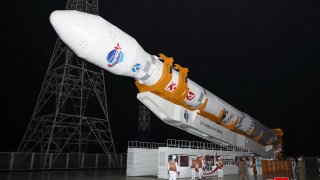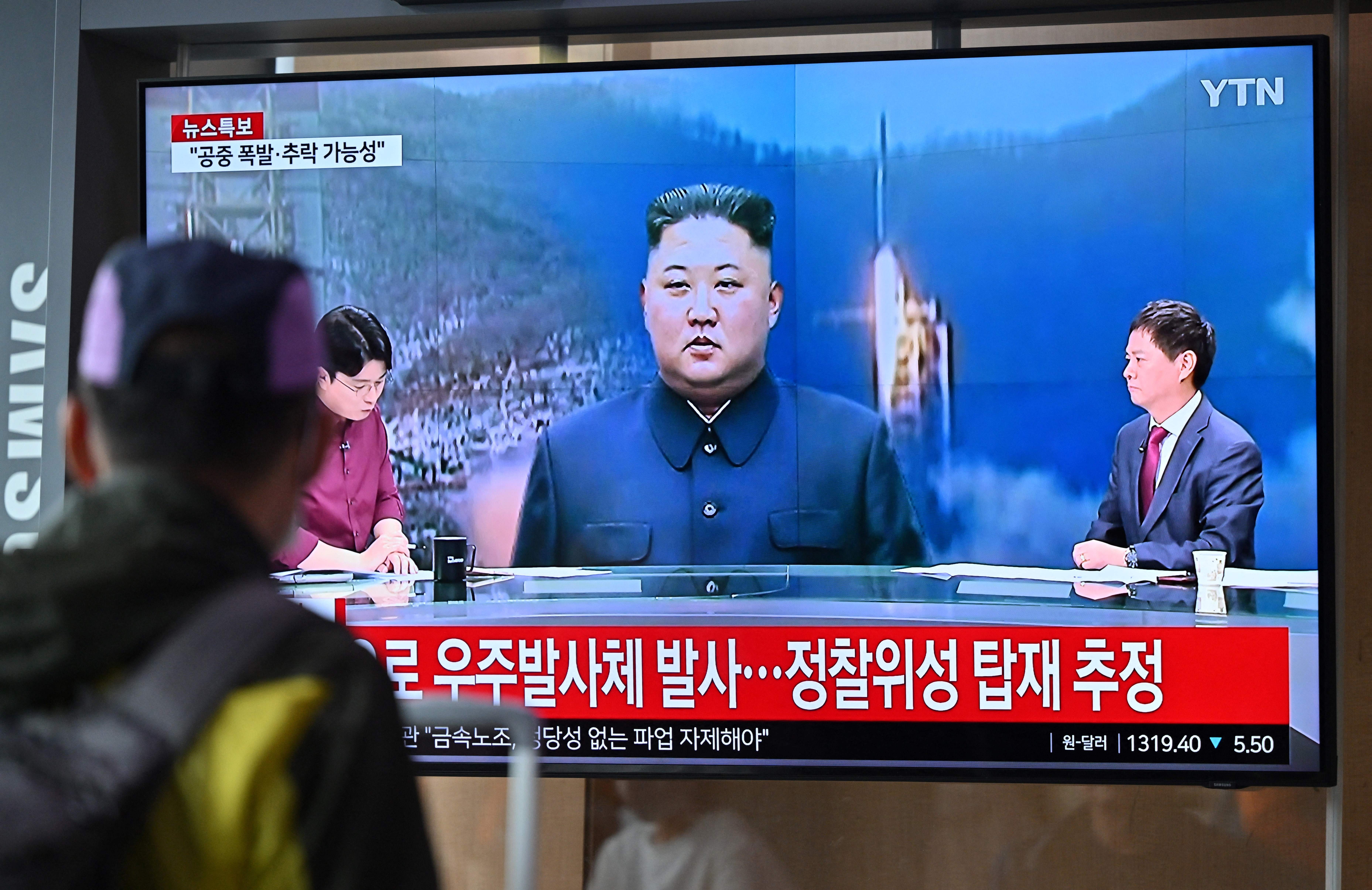
South Korea will partially suspend an inter-Korean agreement Wednesday to restart frontline aerial surveillance of North Korea, after the North said it launched a military spy satellite in violation of United Nations bans, Seoul officials said.
The South Korean announcement — which will likely infuriate North Korea — came hours after the North claimed to have placed a military reconnaissance satellite into orbit in its third such launch attempt this year.
The North’s claim hasn't been independently verified; the Pentagon said it was still assessing the success of the launch, while Japan stated there has been no confirmation that the North Korean satellite entered orbit. But the United States and its allies still quickly condemned the North Korean launch, which they believe was meant to improve the country’s missile technology as well as establish a space-based surveillance system.
North Korea says it has sovereign, legitimate rights to launch spy satellites to cope with what it calls intensifying U.S.-led threats. But U.N. Security Council resolutions still prohibit any satellite liftoff by North Korea, viewing them as covers for testing its long-range missile technology.
Heo Tae-keun, South Korea’s deputy minister of national defense policy, told a televised briefing that the North’s latest satellite launch was not only a clear violation of U.N. resolutions but also “a grave provocation that threatens our national security.”
Heo said South Korea will respond by partially suspending the 2018 inter-Korean tension-reduction agreement later Wednesday to resume aerial surveillance activities at the border. He said the decision was approved at South Korea’s Cabinet Council meeting earlier Wednesday.
He added that based on the solid military alliance with the U.S., South Korea will “promptly and strongly punish” North Korea if it uses the South Korean step as a pretext to launch another provocation.
The 2018 agreement, struck during a short-lived era of reconciliation between the rival Koreas, created buffer and no-fly zones along the countries’ heavily fortified border. Under the deal, the Koreas were required to halt frontline aerial reconnaissance of each other and live-firing exercises and removed some of their guard posts and landmines at border areas.
The deal invited withering conservative criticism in South Korea with critics saying it significantly restricted the operation of the country's aerial surveillance assets, which are much more superior to North Korea’s. They also accused the deal of heavily benefiting North Korea, because it only called for mutual reductions of conventional military strength while leaving the North’s growing nuclear arsenal intact. South Korea has no nuclear weapons.
The brief Korean rapprochement period later evaporated soon after the collapse of broader nuclear diplomacy between North Korea and the U.S. in 2019. North Korea has since ramped up missile tests to modernize its weapons arsenal, prompting the U.S. and South Korea to expand their defense exercises in response.
When the North’s National Aerospace Technology Administration announced what it called a successful launch of its “Malligyong-1” spy satellite, it said the satellite would help improve the North’s war readiness in the face of “the enemies’ dangerous military moves.” The agency said North Korea will soon launch several more spy satellites to better monitor South Korea and other areas.
North Korea used the same satellite in its two failed launches in May and August. South Korea’s military retrieved debris from the first launch and called the satellite too crude to perform military reconnaissance.
The North's space agency said the “Malligyong-1” satellite was placed in its orbit on Tuesday night, about 12 minutes after it was launched aboard the new “Chollima-1” carrier rocket. But the North’s neighbors said they haven’t confirmed whether the launch was successful.
“Our understanding is that so far there is no confirmation of a satellite placed into Earth’s orbit,” Japan’s Chief Cabinet Secretary Hirokazu Matsuno said. He still avoided calling the launch a failure, saying it would take “a fair amount of time” to verify the fate of the North’s launch.
Pentagon deputy press secretary, Sabrina Singh, said, “we’re still assessing the success of the launch.”
In 2012 and 2016, North Korea placed Earth observation satellites into orbit after repeated failures, but experts say neither has ever transmitted imagery back to North Korea.
Before Tuesday's launch, South Korean officials said North Korea was likely receiving Russian technological support for its spy satellite launch program as part of the two countries' pushes to boost their partnerships.
The U.S., South Korea and others accuse North Korea of shipping conventional arms to support Russia's war in Ukraine in exchange for receiving high-tech Russian technologies to enhance its own military programs. Both North Korea and Russia have denied the accusations.
A spy satellite is among an array of sophisticated weapons systems that North Korean leader Kim Jong Un wants to introduce. Experts say Kim would eventually aim to use his enlarged arsenal to win sanctions relief and other concessions from the U.S. when diplomacy resumes.
Some civilian experts said North Korea’s Malligyong-1 satellite is likely capable of only detecting big targets like warships or planes. But by operating several such satellites, North Korea could still observe South Korea at all times, they said.
__
Associated Press writer Mari Yamaguchi in Tokyo contributed to this report.



